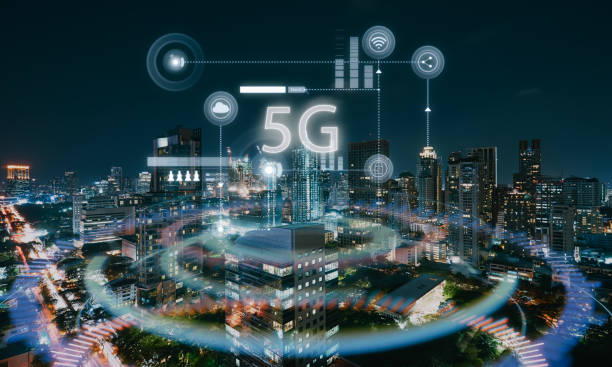What is 5G Connectivity?
5G connectivity is the fifth generation of wireless technology for mobile networks. It offers faster speeds, lower latency, and more capacity compared to previous generations of wireless technology.
For iPhone users, 5G connectivity is available on the iPhone 12 and newer models. These devices can connect to 5G networks, which can provide download speeds up to several gigabits per second, depending on the network and location. This means that users can expect faster streaming, downloading, and browsing experiences when using their iPhone on a 5G network.
Samsung also offers 5G connectivity on its latest devices, including the Galaxy S21 and newer models. These devices can also connect to 5G networks, and users can expect similar benefits as iPhone users when using their Samsung device on a 5G network.
It is worth noting that 5G coverage is not yet available everywhere, and it may be limited in certain areas. Additionally, in order to fully experience the benefits of 5G, users will need to have a 5G plan with their mobile carrier.
In summary, 5G connectivity is the latest generation of wireless technology that provides faster speeds, lower latency, and more capacity for mobile networks. Both iPhone and Samsung offer 5G connectivity on their latest devices, and users can expect improved streaming, downloading, and browsing experiences when using their device on a 5G network. However, the availability of 5G networks is still limited, and users will need to have a 5G plan with their mobile carrier to fully experience the benefits of 5G.
What are the benefits of 5G?
5G connectivity is the latest generation of wireless technology that offers several benefits over previous generations. It has been designed to provide faster speeds, lower latency, and more capacity to support the growing demand for mobile data and the increasing number of connected devices.
One of the main benefits of 5G is its faster speeds. 5G networks can provide download speeds that are up to several gigabits per second, which is significantly faster than 4G networks. This means that users can expect faster streaming, downloading, and browsing experiences when using their mobile device on a 5G network. This can be especially beneficial for activities such as streaming high-definition video, downloading large files, and playing online games with minimal lag.
Another benefit of 5G is its lower latency, which is the time it takes for a device to send and receive data over a network. 5G networks have latency as low as 1ms which is much lower than 4G networks which can have latency as high as 50ms. This can be beneficial for activities such as online gaming and virtual reality, as well as critical applications such as telemedicine and self-driving cars.
5G networks also have more capacity than 4G networks, which means they can support more devices and users in a given area. This can be beneficial in densely populated areas where many users are trying to access the network at the same time. It also helps to prevent network congestion and dropped connections, which can be a problem with 4G networks.
Additionally, 5G networks also offer improved security features, and also help to enable new technologies such as the Internet of Things (IoT) and smart cities. With the increasing number of connected devices, 5G networks can provide the necessary bandwidth and low latency to support these technologies.
How Do I Get 5G?
If you're looking to get 5G, there are a few things you'll need to consider.
First, you'll need to make sure your device is compatible with 5G networks. Most newer smartphones, including the iPhone 12 and newer models and Samsung Galaxy S21 and newer models are compatible with 5G networks. However, if you have an older device, you may need to upgrade to a new phone in order to take advantage of 5G.
Next, you'll need to check if 5G service is available in your area. 5G networks are still being rolled out, so coverage may be limited in certain areas. You can check with your mobile carrier to see if 5G service is available in your area, and if it is, what areas have coverage.
Once you've determined that your device is compatible and that 5G service is available in your area, the next step is to sign up for a 5G plan with your mobile carrier. Many carriers offer 5G plans as an add-on to existing plans, while others may have separate 5G plans. Be sure to compare the different options available to you and choose the plan that best fits your needs.
It is also worth noting that 5G networks can be divided into two types, sub6 and mmWave. Sub6 works on lower frequencies and has a longer range but lower speeds while mmWave works on higher frequencies and has a shorter range but higher speeds. Make sure your device and plan supports the type of 5G network that is available in your area.
Does 5G negatively affect the environment?
There is ongoing debate and research on the potential environmental impact of 5G technology. Some studies suggest that 5G could have negative effects on the environment, while others suggest that the impacts may be minimal.
One potential concern is the energy consumption of 5G infrastructure. 5G networks require more base stations and antennas than previous generations of wireless technology, which could lead to an increase in energy consumption. Additionally, 5G networks operate at higher frequencies than previous generations, which could require more power to transmit the same amount of data.
Another concern is the environmental impact of the production and disposal of 5G devices. The manufacturing and disposal of electronic devices can contribute to environmental pollution, and as 5G technology becomes more prevalent, there may be an increase in the production and disposal of 5G-enabled devices.
Additionally, some studies suggest that 5G technology could potentially impact wildlife, particularly birds and bats, as the higher frequency radio waves used in 5G could interfere with the animals' navigation and communication systems.
However, it is also worth noting that some experts argue that the environmental impact of 5G may be minimal, as the technology could lead to more efficient use of resources and reduced energy consumption in certain areas. For example, 5G networks could enable smart cities and the Internet of Things (IoT), which could lead to more efficient use of resources such as energy and water.
In summary, while there is ongoing debate and research on the potential environmental impact of 5G technology, some studies suggest that 5G could have negative effects on the environment such as energy consumption, electronic waste, and wildlife disruption. However, it may also have positive impact such as enabling efficient use of resources, reducing energy consumption and enabling smart cities and IoT. Further research is needed to fully understand the environmental impact of 5G technology.
Can I get help setting up for 5G?
If you're looking to set up your device for a connection to the 5G network, Master Mobile can help. They can guide you through the process of getting your device ready to connect to a 5G network and provide you with the necessary information to ensure a smooth transition.
However, it's important to note that the availability of 5G networks can vary depending on your location. While 5G networks are being rolled out across the country, coverage may not yet be available in certain areas. Before setting up your device for a 5G connection, it's a good idea to check with Master Mobile or your mobile carrier to see if 5G service is available in the area where you would like to use it.
It's also worth noting that 5G networks can be divided into two types, sub6 and mmWave. Sub6 works on lower frequencies and has a longer range but lower speeds while mmWave works on higher frequencies and has a shorter range but higher speeds. Make sure your device and plan supports the type of 5G network that is available in your area.
Master Mobile can help you with setting up your device for a connection to the 5G network, however, the availability of 5G networks can vary depending on your location. It's a good idea to check with Master Mobile or your mobile carrier to see if 5G service is available in the area where you would like to use it and make sure your device and plan supports the type of 5G network that is available in your area.
How do I get help from Master Mobile ?
There are several ways to get help from Master Mobile, depending on your needs and preferences.
One way to get help is to visit a Master Mobile store. Master Mobile stores are typically staffed with trained technicians who can assist you with setting up your device for a connection to the 5G network, troubleshoot any issues you may be experiencing, and answer any questions you may have.
Another way to get help is to contact Master Mobile through their customer service hotline. You can call the customer service hotline to speak with a representative who can assist you with your issue or concern.
You can also visit Master Mobile's website and look for their "Contact Us" or "Support" page on the website mastermobile.co.uk. Here you will usually find an email address, a contact form and possibly a chatbot to help you with your inquiry.
Lastly, you can also check Master Mobile's social media accounts and message them for assistance. Some companies have dedicated customer service representative on their social media accounts to help customer with their inquiry.
In summary, there are several ways to get help from Master Mobile, including visiting a store, contacting their customer service hotline, visiting their website or reaching out to them on social media. You can choose the option that best suits your needs and preferences.
© 2020 Master Mobile. All rights reserved.


